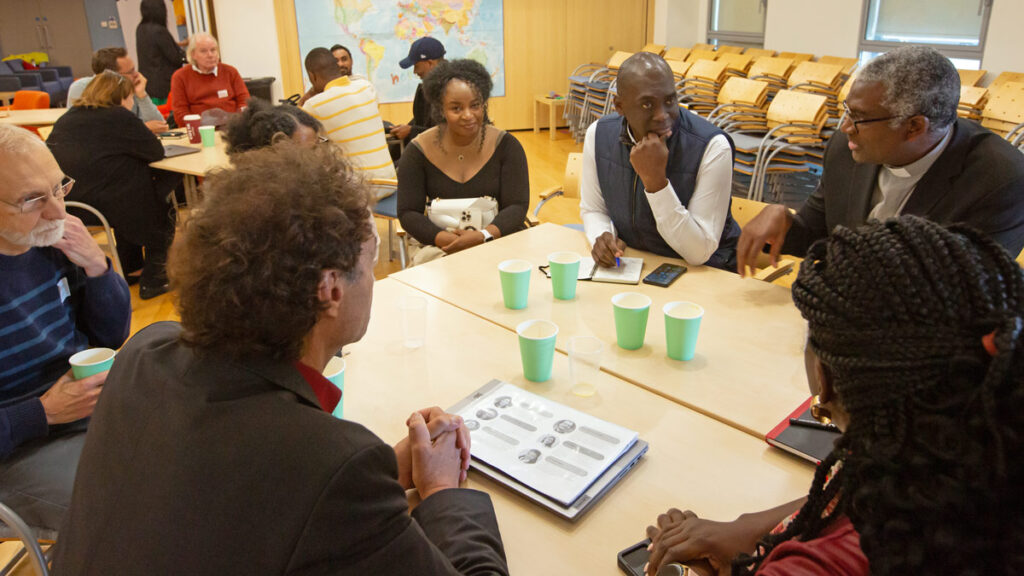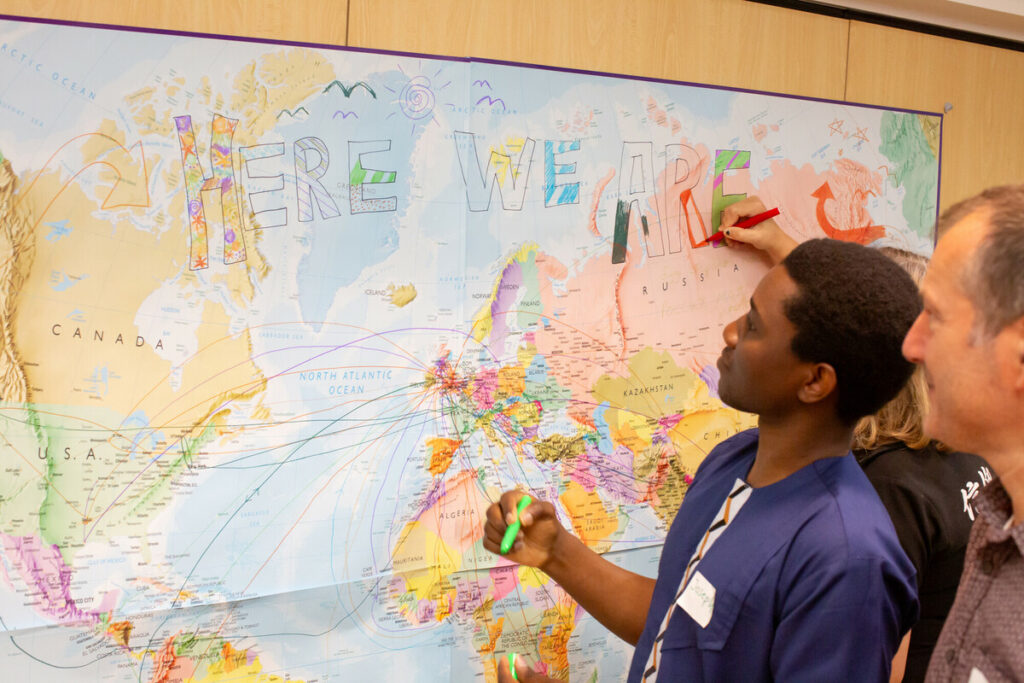Christians on the move
A great deal of what we call mission today really depends on migration. And in many ways, it always has, says Dr Harvey Kwiyani
Photo: Harvey Kwiyani (second from right) with graduates from the Africa-focused route through CMS’s Pioneer Mission Training
Dr Harvey Kwiyani, leader of the Acts 11 Centre for Global Witness and Human Migration at Church Mission Society, reflects on the opportunities of migration and why mission and migration have become his life passion
Since Acts 11 is central to the work we’re doing at CMS around mission and migration, let’s look at the context. In Acts 10, Peter had been in Cornelius’s house, present for the dramatic arrival of the Holy Spirit. He then has to explain to people why he was in a Gentile house, eating with Gentiles. After he shares his account the leaders say, “Now we see that God has given the grace of salvation to the Gentiles.” It’s a conversion from seeing Gentiles as unclean to seeing God at work among them.
Straight after, Luke takes us to Antioch. Due to persecution of early believers in Jesus in Jerusalem, many had to leave. They found refuge in other cities around the Mediterranean – some in Cyprus, others in Antioch, the third largest city in the Roman empire. Antioch was on a trade route between East and West, a hub that connected the world. It was a multicultural, multi-religious city. If you worshipped the emperor, you had your own religious community. If you had come from Jerusalem, you had your synagogue. If you’d come from Egypt, you’d have Egyptian temples.

In this place the believers from Jerusalem began to preach to Gentiles. As Gentiles converted, it didn’t work to join Jews in the synagogue, but they couldn’t keep on going to their old temples. So, they began meeting together as a diverse group to worship this Jewish Messiah. The name “Christians” emerges because of this unique gathering. All other groups worshipped with people from the same background – Christianity brings together people from different parts of the world, different cultures, different races, different languages.
And that’s the story behind Acts 11: a faith shared through migration.
Carrying Christianity
Christian migrants moved from Jerusalem, not necessarily because they wanted to. As they moved, they shared the gospel wherever they were. Likewise, the new CMS centre is about Christians on the move, sharing the good news with people they meet along the way.
“Christians are again moving from place to place, taking their faith with them.”
Why is this important? Because a great deal of what we call mission today really depends on migration. And in many ways, it always has.
Historically, the era of mission agencies is quite short: about 500 years. The church has been around for 2,000 years; in the first 1,500 years Christianity expanded through Christians migrating from one place to another who took the gospel with them. My hope is that today, when we think about mission, we will think about Christians on the move.
Migration in Scripture
To really understand the story of the New Testament, we must understand that key events happen in the context of the Jewish diaspora. When Jesus appears, many Jews had been living out of Palestine for a while. Some had remained in Babylon, some had been scattered to Rome, and at the time of Pentecost there were more Jews living in Alexandria than Jerusalem. The day of Pentecost happens in a context of people on the move. That day, the displaced Jewish diaspora comes back to Jerusalem; Luke describes the presence of devout Jews from every nation on earth.

Pentecost is about these displaced peoples coming together when the Spirit is given, and I believe that these really are the first missionaries. Many key figures – Paul, Barnabas and John Mark – are children of the diaspora. Together they cross boundaries to evangelise Gentiles.
Migration really shapes the Old Testament as well, with the call of Abraham, the Exodus and Babylonian captivity. The Bible is a story of migration: it’s about God being with God’s people as God’s people move from one place to another.
Migration past and present
In the 1800s, 60-80 million people left Europe and moved elsewhere. Of those, a few thousand were missionaries, but a lot of them were just European Christians, carrying their faith with them. European mission agencies played a role, but we often don’t realise that the global Christianity we see today is to a great extent a result of European Christian migration. Thanks to migration, we can rejoice that Christianity is present in every country in the world.

Today migration patterns have shifted. Now we see the rest of the world moving in all directions. It is critical for us to know that 47 per cent of migrants in the world today are Christians, much higher than any other faith. And that’s just people who have crossed international borders and first-generation migrants, not counting subsequent generations. We should also consider people who are moving from one part of a country to another.
As in centuries past, Christians are again moving from place to place, taking their faith with them.
With the Acts 11 centre, we aim to give sustained attention to this issue of Christians migrating and bringing their faith. Christians can be involved in mission wherever God sends them. This is a significant shift from how we normally think about mission: as a movement mostly of Westerners to the rest of the world.
Looking at Africa, the missionary movement there is being driven not by mission agencies but by churches. Churches are responding to their members who find themselves in a city elsewhere in the world, then realise, “There are quite a few of us. We can start a church and our headquarters in Nigeria will send us a pastor.”
We need to pay attention to that, and to create resources that help receiving countries to begin to think differently how to engage with Christian migrants. There’s a lot of potential for research and learning, for mission agencies, for the Church, for everybody to have a sense of what God is doing.
The Acts 11 centre is the start of a very important conversation, which will probably change the way we talk and think about mission. And I’m delighted that we can do that here at CMS.